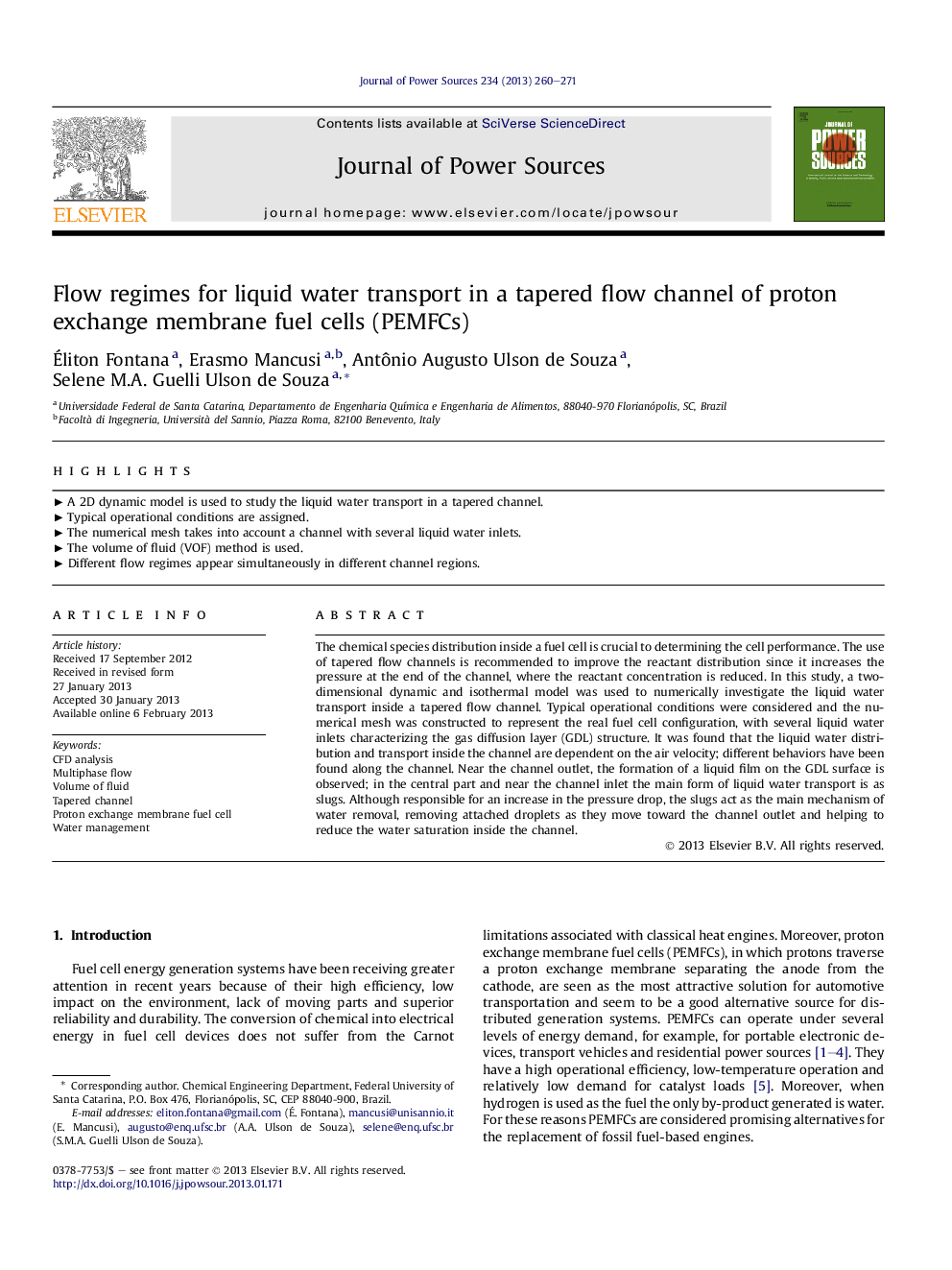| Article ID | Journal | Published Year | Pages | File Type |
|---|---|---|---|---|
| 1287953 | Journal of Power Sources | 2013 | 12 Pages |
The chemical species distribution inside a fuel cell is crucial to determining the cell performance. The use of tapered flow channels is recommended to improve the reactant distribution since it increases the pressure at the end of the channel, where the reactant concentration is reduced. In this study, a two-dimensional dynamic and isothermal model was used to numerically investigate the liquid water transport inside a tapered flow channel. Typical operational conditions were considered and the numerical mesh was constructed to represent the real fuel cell configuration, with several liquid water inlets characterizing the gas diffusion layer (GDL) structure. It was found that the liquid water distribution and transport inside the channel are dependent on the air velocity; different behaviors have been found along the channel. Near the channel outlet, the formation of a liquid film on the GDL surface is observed; in the central part and near the channel inlet the main form of liquid water transport is as slugs. Although responsible for an increase in the pressure drop, the slugs act as the main mechanism of water removal, removing attached droplets as they move toward the channel outlet and helping to reduce the water saturation inside the channel.
► A 2D dynamic model is used to study the liquid water transport in a tapered channel. ► Typical operational conditions are assigned. ► The numerical mesh takes into account a channel with several liquid water inlets. ► The volume of fluid (VOF) method is used. ► Different flow regimes appear simultaneously in different channel regions.
